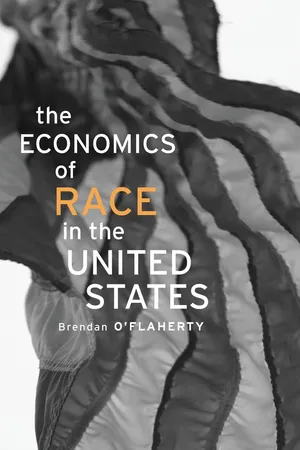Social Sciences
Educational Achievement
Educational achievement refers to the level of success a student attains in their academic pursuits, typically measured by grades, test scores, and completion of educational milestones. It encompasses both cognitive and non-cognitive skills, as well as social and emotional development. Factors influencing educational achievement include individual abilities, socioeconomic background, access to resources, and the quality of educational institutions.
Written by Perlego with AI-assistance
Related key terms
4 Key excerpts on "Educational Achievement"
- eBook - ePub
- John Hattie, Eric M. Anderman(Authors)
- 2013(Publication Date)
- Routledge(Publisher)
Adults seeking further education are not always motivated by academic goals and achievements, such as grades or diplomas, however. Adult education is also often informal and unstructured with no set curriculum, and desired learner outcomes may not be clearly specified. Whereas adult education may nonetheless be pursued within the confines of formal institutions, such as universities, public libraries, or museums, it may also be taken up privately by individuals or groups without any obvious connection to an educational or cultural institution. In these and other situations, it is largely up to individual adult learners (sometimes in consultation with their teachers or mentors) to determine how and to what extent they have “achieved” some level of knowledge or skill. Thus, the task of describing what academic achievement means in the context of adult education is daunting.In formal education institutions, however, adult learners' academic achievement is typically defined and determined by indicators such as course grades and accumulated grade point average (GPA), and the earning of diplomas or degrees, certificates, vocational licenses, or other such education credentials. A somewhat narrower view of achievement localizes on standardized (norm-referenced) test scores within specific disciplines of study. Achievement in many educational contexts, including adult education, is synonymous with academic learning, but broadly speaking academic accomplishments may also pertain to growth in individual learners' cognitive abilities, skill development (physical and/or social), or affect (attitudes and values).Other, broader approaches to determining achievement in adult education indicate students' success in making a successful transition to higher (postsecondary) education, and their abilities to transfer what they have learned in the classroom to other settings and situations (i.e., the workplace). Both transition and transfer are related to the concept of return-on-investment (ROI), an economic indicator of Educational Achievement. ROI compares the “costs” (direct or indirect, fixed or variable, short- or long-term) to various entities, including individual students, employers, educational institutions, or the state, and the “benefits” of educational programming, such as increased skills and knowledge, greater self-confidence, and increased employ-ability for individuals, more skilled workers for employers, and increased tax revenues for the state, as better-skilled workers are paid higher wages. - eBook - ePub
- Brendan O'Flaherty(Author)
- 2015(Publication Date)
- Harvard University Press(Publisher)
7Education
We’ve seen that differences in educational attainment—how many years you’ve gone to school—and Educational Achievement—what you learned—explain a big part of the disparities in earnings and employment. The obvious next questions are what explains differences in educational attainment and achievement and what, if anything, should be done about them.Education is valuable. The average rate of return on education was above the rate of return on bonds almost all of the last century and has been well above the rate of return on stocks for the past decade. Even in normal times, education usually beats most other investments, although it’s individually risky (if you invested in becoming a travel agent in 1990, you made a mistake that was hard to hedge against). Individual returns to education are more than pecuniary: holding income constant, people with more education are healthier, live longer, and may live better. Education has external benefits as well: educated people invent and innovate more, commit less crime, participate in civic affairs more and bring more to those affairs, and help educate children around them.This chapter begins with basic facts about educational attainment (first section) and Educational Achievement (second section). The third section discusses possible reasons for racial disparities in attainment and achievement. The next section is about possible reforms in elementary and secondary education and their effect on the racial gaps. The last substantive section is about higher education, but it discusses only one policy, affirmative action.Disparities in Educational Attainment
Educational attainment means how long you went to school and what degrees you got. Of the outcomes associated with education, attainment is easiest to measure, and it is a surprisingly powerful variable. Education is in part socialization and a way to keep you off the streets, so for some outcomes attainment is all that’s important. It’s also a necessary condition for a lot of achievement. - eBook - ePub
Exploring Social Inequality in the 21st Century
New Approaches, New Tools, and Policy Opportunities
- Jennifer Jarman, Paul Lambert(Authors)
- 2018(Publication Date)
- Routledge(Publisher)
How well can we predict educational outcomes? Examining the roles of cognitive ability and social position in educational attainment Tim Morris, Danny Dorling and George Davey SmithSocial inequalities in UK educational outcomes continue to persist despite improvements in recent years. However, studies that examine these inequalities fail to account for differences in prior cognitive ability. We seek to determine the influence of cognitive ability on educational outcomes and the extent of socio-economic disparities in education across a wide range of indicators while accounting for cognitive ability. Social inequalities exist whereby children from disadvantaged backgrounds systematically underperform compared to their advantaged peers regardless of cognitive ability; high ability children from disadvantaged backgrounds are disproportionately less likely to attain good grades compared to children from advantaged backgrounds. In addition, school effects operate to add to this inequality as children in fee-paying secondary schools outperform their state secondary school counterparts regardless of ability. Future UK policies should focus on reducing social inequality in education to ensure that all children are offered the same life chances regardless of background.Introduction
Social inequalities in education have long been documented in great detail in many modern societies, with social forces acting directly to increase or maintain them through lack of material resources or non-alleviation of developmental problems (McLoyd, 1998), or indirectly through parental attitudes to education, to children and parents’ ability to help (Phillips, Brooks-Gunn, Duncan, Klebanov, & Crane, 1998). In the UK children from family backgrounds characterised by high socio-economic position (SEP) outperform their lower SEP counterparts (Bynner & Joshi, 2002). Research into social inequalities in education has demonstrated that not only are disadvantaged children far less likely to become high academic attainers at any stage (Crawford, Macmillan, & Vignoles, 2014) but that high-attaining socio-economically disadvantaged children are academically overtaken by their average-attaining, more economically advantaged peers (Goodman & Gregg, 2010). In the UK and the US these differences appear as early as pre-school but there is conflicting evidence on how developmental trajectories diverge (Centre for Market and Public Organisation [CMPO], 2006; Cunha, Heckman, Lochner, & Masterov, 2006; Feinstein, 2003; Goodman & Gregg, 2010; Tomlinson, 2013). - eBook - ePub
- Carl L. Bankston(Author)
- 2014(Publication Date)
- Polity(Publisher)
8Adaptation: Educational Attainment and AchievementEducational performance has long been one of the primary areas of social capital research. James S. Coleman, the influential sociological theorist of social capital, argued that structures of social relations can account for differences in educational performance across families and across communities. He maintained that parental interest in children’s learning can promote academic achievement even when the parents have little human capital. Moreover, social capital in a community allows parents “to establish norms and reinforce each other’s sanctioning of the children” (Coleman, 1990: 318). From this perspective, social capital within the family and the community, inherent in the social structures of some ethnic groups, can help generate human capital in the second generation (Coleman, 1988).Following Coleman, educational versions of social capital theory have tended to emphasize the importance of dense, transitive ties within communities. While researchers have debated when and whether weak ties can promote occupational upward mobility for individuals and groups by bringing in useful information, social capital accounts of success in education have generally focused on the control and direction provided by bonding ties in immigrant families and communities. Insofar as researchers have considered bridging ties to outsiders as an influence on the school performance of children in immigrant groups, they have looked mainly at connections between immigrants and school personnel (see, for example, Stanton-Salazar and Dornbusch, 1995).The idea that social capital for educational advancement may consist of linkages between interpersonal networks and formal institutions is consistent with the arguments of Robert Putnam (1995; 2000), who portrayed membership in organizations such as parent–teacher organizations and associations (PTOs and PTAs) as vital sources of generalized social capital. However, while there may be differences in the degree of involvement of parents from different immigrant groups in the schooling of their children, if parents’ connections to schools constitute the most important social asset for immigrant children, then immigrant networks per se would tend to be liabilities because immigrant families generally have fewer connections to schools (Kao and Rutherford, 2007). As Patricia Fernández Kelly (2002: 81) has perceptively observed, “ethnic institutions almost by definition do not provide a large number of external links. Their role is to maximize internal resources and to supply the needs of groups that have either recently arrived … or been left behind by the hardening of ethnic demarcations.” Network closure entails an inward concentration of social ties, limiting linkages to institutions and people outside the ethnic group. In what situations, then, would immigrant network closure contribute to Educational Achievement and attainment?
Learn about this page
Index pages curate the most relevant extracts from our library of academic textbooks. They’ve been created using an in-house natural language model (NLM), each adding context and meaning to key research topics.



